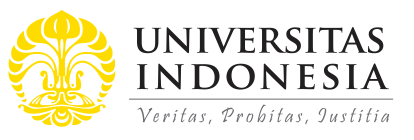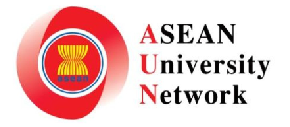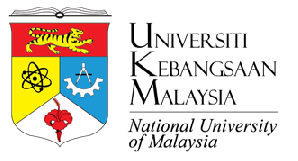
Abstract
To raise awareness and understanding of maternal and children’s health, a team from Faculty of Medicine, Universitas Indonesia, Indonesia, conducted a program called Tinggi Cerdas. It is a community development program in Kampung Lio, Depok, West Java. This article evaluates the impacts of activity related to the participant’s awareness and knowledge about maternal and children’s health. The program was developed and conducted as an online program due to the COVID-19 pandemic situation, from September to December 2021. The program was developed with four different topics through online communication, equipped with an educational booklet for the mothers and a PrimaKu® application for health workers. Such approaches were employed to provide the community with better health awareness and understanding, as well as an instrument for the health workers to monitor the condition of the participants. Community health workers (CHWs) were given a workshop about the application to help them in raising mothers’ awareness to monitor their children’s growth and development. To examine the impacts of the program, pre- and post-tests were used to evaluate the impact on the participants’ knowledge—the mothers’ and CHWs’. The result of the program’s assessment suggests that mothers’ knowledge and awareness about children’s and maternal health are improved, particularly when the application was also utilized by the CHWs in Kampung Lio. The participants are satisfied with the program, implying the program should be repeated. Despite the limitations, health education for mothers and CHWs could be carried out successfully. Insights and reflections are provided in this study to encourage readers to develop a more effective program in the future.
References
Akseer, N., Kandru, G., Keats, E. C., & Bhutta, Z. A. (2020). COVID-19 pandemic and mitigation strategies: Implications for maternal and child health and nutrition. The American Journal Of Clinical Nutrition, 112(2), 251–256. https://doi.org/10.1093/ajcn/nqaa171
Agosti, M., Tandoi, F., Morlacchi, L., & Bossi, A. (2017). Nutritional and metabolic programming during the first thousand days of life. La Pediatria Medica e Chirurgica, 39(2), 57–61. https://doi.org/10.4081/pmc.2017.157
Amaha, N. D., & Woldeamanuel, B. T. (2021). Maternal factors associated with moderate and severe stunting in Ethiopian children: Analysis of some environmental factors based on 2016 demographic health survey. Nutrition Journal, 20(1). https://doi.org/10.1186/s12937-021-00677-6
Beal, T., Tumilowicz, A., Sutrisna, A., Izwardy, D., & Neufeld, L. M. (2018). A review of child stunting determinants in Indonesia. Maternal & Child Nutrition, 14(4), e12617. https://doi.org/10.1111/mcn.12617
Bettiol, A., Gelain, E., Milanesio, E., Asta, F., & Rusconi, F. (2021). The first 1000 days of life: Traffic-related air pollution and development of wheezing and asthma in childhood. A systematic review of birth cohort studies. Environmental Health, 20, 46. https://doi.org/10.1186/s12940-021-00728-9
Bobek, E., & Tversky, B. (2016). Creating visual explanations improves learning. Cognitive Research: Principles and Implications, 1, 27. https://doi.org/10.1186/s41235-016-0031-6
Collier R. (2011). Educating patients with pictures. CMAJ: Canadian Medical Association Journal, 183(15), E1094. https://doi.org/10.1503/cmaj.109-3967
de Onis, M., & Branca, F. (2016). Childhood stunting: A global perspective. Maternal & Child Nutrition, 12(S1), 12–26. https://doi.org/10.1111/mcn.12231
Derbyshire, E., & Obeid, R. (2020). Choline, neurological development and brain function: A systematic review focusing on the first 1000 days. Nutrients, 12(6), 1731. https://doi.org/10.3390/nu12061731
Gülpınar, G., & Özçelikay, G. (2021). Development of a structured communication and counseling skills course for pharmacy students: A simulation-based approach. Turkish Journal of Pharmaceutical Sciences, 18(2), 176–184. https://doi.org/10.4274/tjps.galenos.2020.93709
Gummerson, E., Cardona, C., Anglewicz, P., Zachary, B., Guiella, G., & Radloff, S. (2021). The wealth gradient and the effect of COVID-19 restrictions on income loss, food insecurity and health care access in four sub-Saharan African geographies. PloS ONE, 16(12), e0260823. https://doi.org/10.1371/journal.pone.0260823
Haleem, A., Javaid, M., & Vaishya, R. (2020). Effects of COVID-19 pandemic in daily life. Current Medicine Research and Practice, 10(2), 78–79. https://doi.org/10.1016/j.cmrp.2020.03.011
Hall, M. B., Winterbauer, N. L., Klinger, C., Tucker-McLaughlin, M., Rafferty, A., Greene, G., & Dodson, S. (2021). The creation of a program of engagement and outreach for COVID-19 among African Americans through community- academic partnerships. Journal of Community Health, 46(6), 1183–1187. https://doi.org/10.1007/s10900-021-01008-w
Haragi, M., Ishikawa, H., & Kiuchi, T. (2019). Investigation of suitable illustrations in medical care. Journal of Visual Communication in Medicine, 42(4), 158–168. https://doi.org/10.1080/17453054.2019.1633237
Jacob, U. S., Pillay, J., & Oyefeso, E. O. (2021). Attention span of children with mild intellectual disability: Does music therapy and pictorial illustration play any significant role? Frontiers in Psychology, 12, 677703. https://doi.org/10.3389/fpsyg.2021.677703
Marsh, E. E., Kappelman, M. D., Kost, R. G., Mudd-Martin, G., Shannon, J., Stark, L. A., & Carrasquillo, O. (2021). Community engagement during COVID: A field report from seven CTSAs. Journal of Clinical and Translational Science, 5(1), e104. https://doi.org/10.1017/cts.2021.785
Martorell, R. (2017). Improved nutrition in the first 1000 days and adult human capital and health. American Journal of Human Biology, 29(2), e22952. https://doi. org/10.1002/ajhb.22952
Moreno Villares, J. M. (2016). Los mil primeros días de vida y la prevención de la enfermedad en el adulto [Nutrition in early life and the programming of adult disease: the first 1000 days]. Nutrición Hospitalaria, 33(Suppl. 4), 337, 8–11. https://scielo.isciii.es/scielo.php?script=sci_arttext&pid=S0212-16112016001000003
Norris, E. M. (2012). The constructive use of images in medical teaching: A literature review. JRSM Short Reports, 3(5), 1–8. https://doi.org/10.1258/shorts.2012.011158
O’Mara-Eves, A., Brunton, G., Oliver, S., Kavanagh, J., Jamal, F., & Thomas, J. (2015). The effectiveness of community engagement in public health activities for disadvantaged groups: A meta-analysis. BMC Public Health, 15, 129. https://doi.org/10.1186/s12889-015-1352-y
Pak, A., Adegboye, O. A., Adekunle, A. I., Rahman, K. M., McBryde, E. S., & Eisen, D. P. (2020). Economic consequences of the COVID-19 outbreak: The need for epidemic preparedness. Frontiers in Public Health, 8, 241. https://doi. org/10.3389/fpubh.2020.00241
Park, J., & Zuniga, J. (2016). Effectiveness of using picture-based health education for people with low health literacy: An integrative review. Cogent Medicine, 3(1), 1264679. https://doi.org/10.1080/2331205X.2016.1264679
Plunk, A. D., Carver, A., Minggia, C., Prasanna, K., Sheehan, B. E., Herman, M., Burwell, C. B., Moeller, F. G., Krist, A. H., & McQueen-Gibson, E. (2022). Virtual engagement of under-resourced communities: Lessons learned during the COVID-19 pandemic for creating crisis-resistant research infrastructure. Journal of Clinical and Translational Science, 6(1), e44. https://doi.org/10.1017/cts.2022.385
Ranjitkar, S., Strand, T. A., Ulak, M., Kvestad, I., Shrestha, M., Schwinger, C., Chandyo, R. K., Shrestha, L., & Hysing, M. (2022). Impact of the COVID-19 pandemic on daily life and worry among mothers in Bhaktapur, Nepal. PLOS Global Public Health, 2(4), e0000278. https://doi.org/10.1371/journal.pgph.0000278
Runtu, F. M. J. G., Ardhia, S. H., Lokeswara, A. W., & Friska, D. (2021). Shaping effective communication skills in first-year medical students community diagnosis exercise. The Journal of the Pakistan Medical Association, 71(Suppl. 2), S37– S41. https://pubmed.ncbi.nlm.nih.gov/33785939/
Schubbe, D., Scalia, P., Yen, R. W., Saunders, C. H., Cohen, S., Elwyn, G., van den Muijsenbergh, M., & Durand, M. (2020). Using pictures to convey health information: A systematic review and meta-analysis of the effects on patient and consumer health behaviors and outcomes. Patient Education and Counseling, 103(10), 1935–1960. https://doi.org/10.1016/j.pec.2020.04.010
Sonoda, K., & Salter, C. (2022). Virtual community outreach during the COVID-19 pandemic: Addressing health disparities for vulnerable populations. Community Based Participatory Research, 20(Suppl. 1). https://doi.org/10.1370/afm.20.s1.2609
Widyahening, I. S., Aufa, M. A., Alhas, M. F., Widodo, A. B., & Friska, D. (2021). Knowledge, attitude, and practice of mothers on the first 1000 days of life. EJournal Kedokteran Indonesia, 9(2). https://doi.org/10.23886/ejki.9.65.129
Win, K., Hassan, N. M., Bonney, A., & Iverson, D. (2015). Benefits of online health education: Perception from consumers and health professionals. Journal of Medical Systems, 39(3). https://doi.org/10.1007/s10916-015-0224-4
Recommended Citation
Aurelia, Shafira; Andini, Dheanita Nissrina; Soloan, Garry; Waladhiyaputri, Vahira; and Friska, Dewi
(2023).
Engaging Mothers and Community Health Workers: An Online Maternal and Children’s Health Education in Kampung Lio, Indonesia.
ASEAN Journal of Community Engagement, 7(1), 80-95.
Available at: https://doi.org/10.7454/ajce.v7i1.1191
Included in
Community Health and Preventive Medicine Commons, Education Commons, Maternal and Child Health Commons, Public Health Education and Promotion Commons







